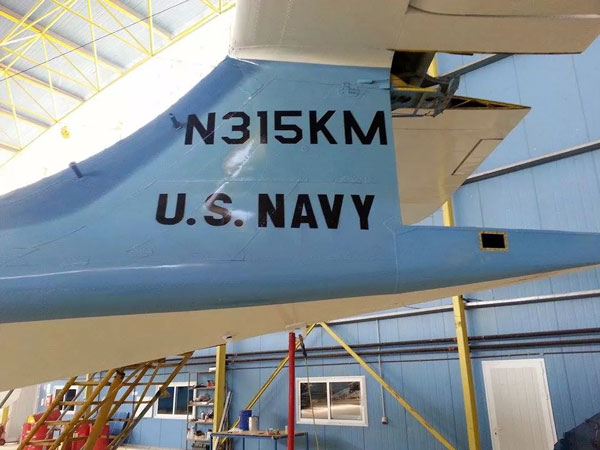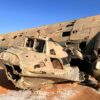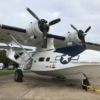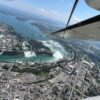In the many years that I have been writing this column the number of airworthy Catalina survivors has decreased somewhat. Back in the mid-80s there were still quite a few Catalinas engaged in water bombing together with a few others used for various other purposes but with the withdrawal of the type from fire fighting the airworthy population has decreased quite dramatically. However, there are still plenty of examples in museums etc and there never seems to be any shortage of news! This latest summary is extracted from the Autumn/Winter 2014 edition of The Catalina News, distributed to members of The Catalina Society.
In Greece, the former RCAF Canso A originally serialled 11042 has just been placed on the US Civil Aircraft register under Type Certificate TC 785 with the marks N315KM assigned on August 29th, 2014. The registered owner is Sea Link Aviation Inc of Stamford, Connecticut. It is thought that the aircraft will remain at Tatoi in Greece where it has been located for some time. It was de-registered from its former Cypriot marks 5B-PBY some time ago and has not flown in recent times but hopefully this latest development will see it back in the air again …..
PBY-5A NX2172N is owned by the Erickson Group and was until recently based with the Tillamook Air Museum at Tillamook in Oregon. The museum recently re-located to Madras, Oregon and the Catalina was flown to its new home on May 12th this year.
Another museum aircraft is PBY-5A N3936A which is held in storage by Kermit Weeks at Polk City in Florida. Rescued from another Museum in Connecticut many years back, N3936A was in poor shape then and has remained dismantled but hangared ever since. Kermit also owns the airworthy PBY-5A N96UCand this was part of his Fantasy of Flight Collection at Tamiami which closed for daily visits earlier this year. There are no indications that either aircraft are under threat but let us hope that this is the case and that perhaps N3936A might be restored soon.
In the last edition I mentioned the PBY-6A VH-EAX of the Qantas Founders Museum at Longreach, Queensland. Its restoration to static display standards continues but its Australian registration was formally cancelled on June 19th, 2014.
The airworthy Australian PBY-6A VH-PBZ continues to fly on a regular basis with its operator Historical Aircraft Restoration Society (HARS) at Albion Park, Sydney. For example it appeared at CMA14, the Centenary of Military Aviation at Point Cook in March this year and will presumably be gearing up for the forthcoming display season ‘down-under’ just as our European one winds down!
Less positive news from my correspondent Silvano Jung in Australia is that the former WWII flying boat base at East Arm, Darwin, used by 20 Sqn, RAAF, is to be obliterated by development instead of being granted heritage status. Heritage Minister Peter Chandler stated that the old base and other nearby tracts of land are to be significantly developed for marine industry use and that the granting of heritage status would prevent that development taking place. This decision will be a blow to veterans and also to Silvano whose research has done much to keep the area’s wartime significance alive.
Catalina fan Dick Milne has travelled the world to seek out and photograph surviving Catalinas and now only has a couple left to visit! The most recent example to be ‘ticked off’ the list was the PBY-6A FAB 6552, formerly operated by the Força Aérea Brasileira. Dick tells the story of his visit: “My interest is of a historical nature related to locating some of the more remote surviving PBYs in the world. FAB 6552 certainly fitted into that category. FAB 6552 is a preserved Catalina situated on the air base at Belém in the Amazon region of northern Brazil. It is cared for by an amazing bunch of about 50 guys who call themselves the Catalineiros. Most had connections with the air force and all are part of the group because of their love of the Catalina. At least one member is an ex war-time captain who attended their get-together at Belém Air Base in March this year at which I was also a privileged guest. Some of the history of the aircraft can be accessed in David Legg’s excellent bookConsolidated PBY Catalina – the Peacetime Record. Its recent history in active service saw it flying cargo and aid missions to the villagers in the remote Amazon regions. Its capabilities were ideally suited to serve the isolated inhabitants of the region, characterised by its rivers and dense forest. It was known as “Pata Choca,” (pregnant duck) by FAB personnel and as” Anjo do Espaco,” (Angel of Space) by the Amazonian villagers. It suffered a ground accident in 1978 but was repaired and was finally withdrawn from service in 1982. It was the only PBY-6A acquired by the air force and was designated the CA-10. It is now under the care of the Commander of First Regional Air Command (COMAR 1). It is mostly situated at the base main gate along with a C-47, but sometimes resides in one of the hangars. It is hoped that a small air force museum, situated at the moment off base, will transfer to the base to link up with the aircraft to allow for a more public and celebrated facility. Hopefully the momentum set up, and supported by the Regional Commander, Major Brigadeiro DOAR Carlos Eurico Peclat dos Santos, will continue although he himself is moving soon to Brasilia. The other PBYs with FAB were either ex-US Navy PBY-5As or RCAF Canso As. Several were sold to US museums in the 1980s but two remain preserved in Brazil the one at Belém the other at the Aerospace Museum at Campo dos Afonsos near Rio. I would like to thank David Legg for his help in setting up my visit. I would also like to thank Joao Alfredo de Oliveira (Chairman of the Group of Catalineiros of Brazil) and Francisco e assis Ferreira who both worked very hard to coordinate my visit, and for their immeasurable hospitality. I would also like to thank the Commander of the Air Base at Belém”.
The only airworthy Catalina in Western Canada these days is C-FUAW, once a RCAF Canso A and, in civilian life, used for many years as a water bomber. After retirement from the latter role it was acquired by Bob Dyck and it currently registered to his company Pacific Flying Boats Ltd and based at Victoria International Airport on Vancouver Island, British Columbia. After delivery to Victoria in November 2010, its engines were loaned out so that Canso A C-FNJB could be delivered from nearby Nanaimo to the Evergreen museum at McMinnville, Oregon. Once the engines had been returned, some flying was carried out including some water ops on Lake Cowichan but the starboard engine subsequently failed en route to an air show at Comox. Following overhaul by Anderson Airmotive in Idaho, the former Canso is being readied for flight and has been receiving an overall white colour scheme to replace its former bright yellow and red livery. It is assumed that it will represent a RCAF Canso A, maybe even one based during WWII at the Patricia Bay seaplane base adjacent to it current home. More news when I have it.

Former Canso A 5B-PBY has recently been placed on the American FAA register as N315KM. It is seen here performing a very low pass at the Tanagra air show in 2005 Photo: Makis Galiatsatos

A close up of the former 5B-PBY’s new US registration

PBY-6A s/n FAB 6552 was the Catalina that Dick Milne saw at Belém in the Amazon region of northern Brazil during his visit earlier this year Photo: Dick Milne

Canso A C-FUAW undergoing its repaint at Victoria on British Columbia’s Vancouver Island this summer Photo: Stoney Jackson
















